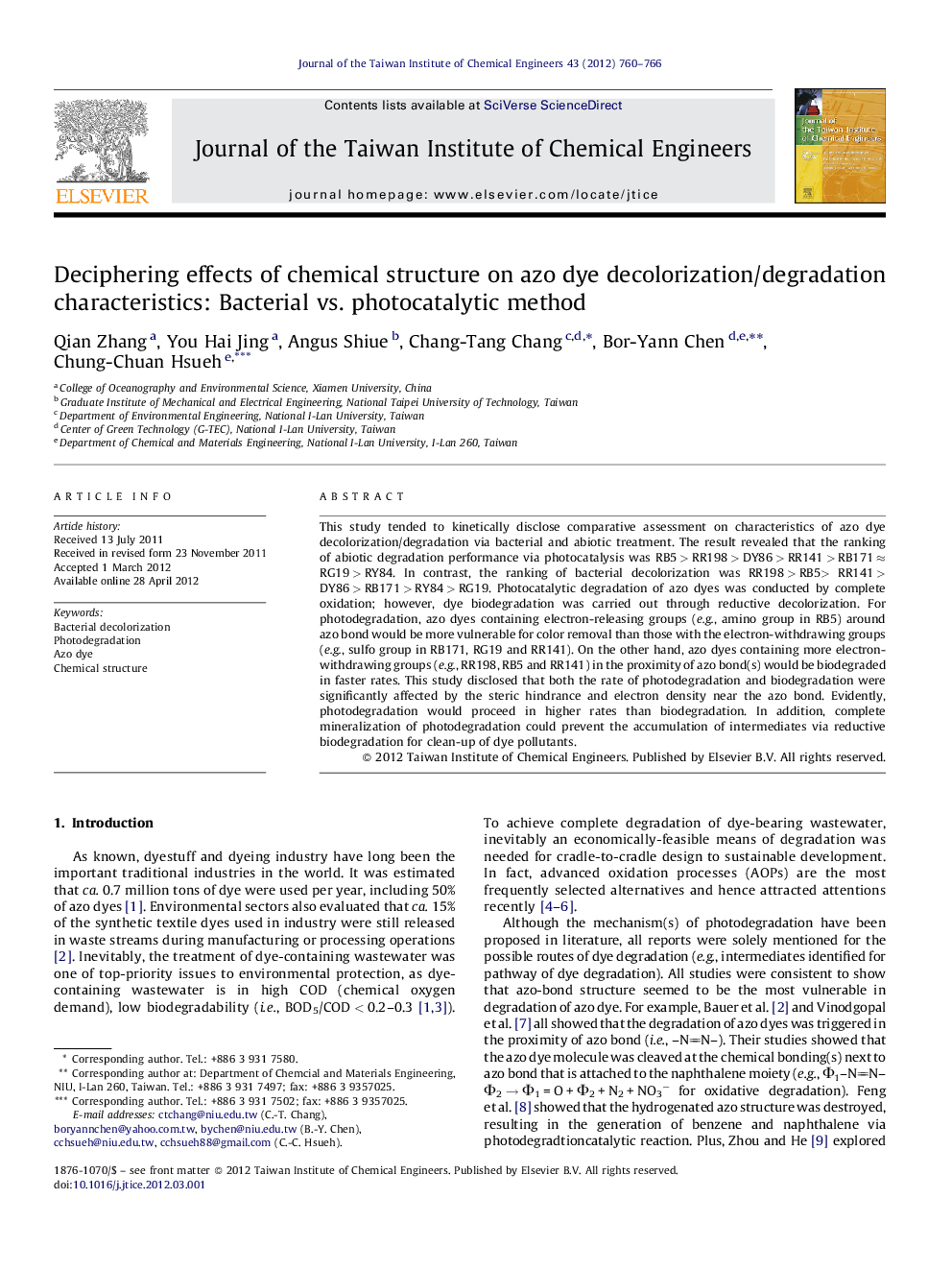| Article ID | Journal | Published Year | Pages | File Type |
|---|---|---|---|---|
| 691807 | Journal of the Taiwan Institute of Chemical Engineers | 2012 | 7 Pages |
This study tended to kinetically disclose comparative assessment on characteristics of azo dye decolorization/degradation via bacterial and abiotic treatment. The result revealed that the ranking of abiotic degradation performance via photocatalysis was RB5 > RR198 > DY86 > RR141 > RB171 ≈ RG19 > RY84. In contrast, the ranking of bacterial decolorization was RR198 > RB5> RR141 > DY86 > RB171 > RY84 > RG19. Photocatalytic degradation of azo dyes was conducted by complete oxidation; however, dye biodegradation was carried out through reductive decolorization. For photodegradation, azo dyes containing electron-releasing groups (e.g., amino group in RB5) around azo bond would be more vulnerable for color removal than those with the electron-withdrawing groups (e.g., sulfo group in RB171, RG19 and RR141). On the other hand, azo dyes containing more electron-withdrawing groups (e.g., RR198, RB5 and RR141) in the proximity of azo bond(s) would be biodegraded in faster rates. This study disclosed that both the rate of photodegradation and biodegradation were significantly affected by the steric hindrance and electron density near the azo bond. Evidently, photodegradation would proceed in higher rates than biodegradation. In addition, complete mineralization of photodegradation could prevent the accumulation of intermediates via reductive biodegradation for clean-up of dye pollutants.
► First comparative assessment on characteristics of abiotic and biotic dye decolorization/degradation. ► First inspection on effects of chemical structure on abiotic and biotic dye decolorization. ► Electron-releasing groups around azo bond vulnerable for color removal via photodegradation.
